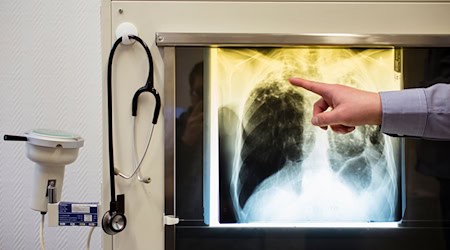In this year's tick season, the number of TBE cases in Saxony has almost doubled compared to the previous year. According to the weekly epidemiological reports from the State Investigation Institute (LUA), 48 cases of tick-borne encephalitis (TBE) had been reported by October 20. In the same period last year, there were 27 cases. According to the Robert Koch Institute (RKI), ticks are active from a temperature of around six degrees.
Almost all regions in Saxony are now classified as risk areas. The only exceptions are the city of Leipzig and the districts of Leipzig and North Saxony. The RKI counted 475 TBE cases nationwide in 2023. At 99 percent, the absolute majority of those affected had not been vaccinated or not sufficiently vaccinated.
Borreliosis cases at previous year's level
In contrast, the figures for Lyme disease in Saxony are at the same level as in 2023: 1323 cases have been registered so far, compared to 1331 in the same period last year, with only a few cases added recently. In the spring and summer months, however, the state testing institute registered dozens of new cases of Lyme disease every week.
The pathogens can be transmitted by ticks. If left untreated, Lyme disease can lead to inflammation of the joints, heart muscle and nerves.
FMSD begins with flu-like symptoms, later nervous system problems are also possible. There are vaccinations against TBE, while Lyme disease is treated with antibiotics.
The Standing Committee on Vaccination (STIKO) recommends a TBE vaccination for people in risk areas who could come into contact with ticks. The vaccination rate in Saxony in 2022 was 18.8 percent.
In the risk areas, long-sleeved clothing should also be worn if possible when walking in the forest or foraging through tall grass and bushes. You should also check your head and body for ticks afterwards. If you find one of the small bloodsuckers, you should remove it as quickly as possible.
Copyright 2024, dpa (www.dpa.de). All rights reserved










